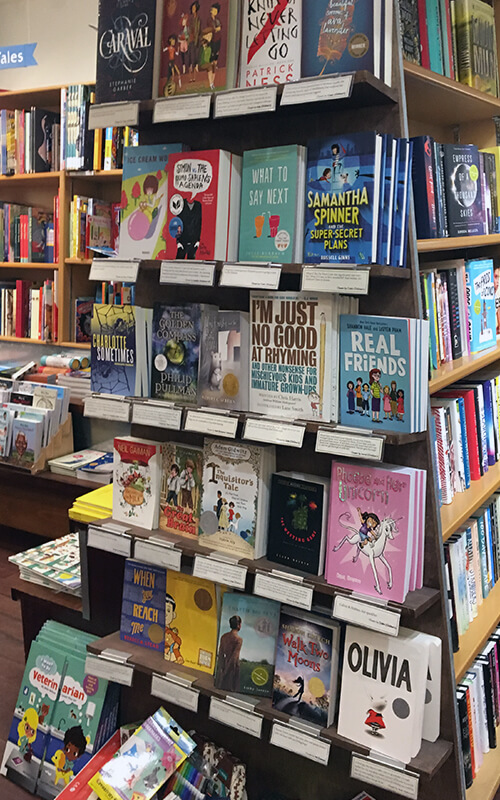Choosing the Right Words for Your Shelftalkers
Use shelftalkers to share YOUR unique insights
With all the information available online about products, potential buyers can feel overwhelmed. We talked in a previous In Real Life post about how brick and mortar stores can offer community and a carefully curated selection of products. In this post, we will talk more about how to word your shelf talkers to help them do that.
Keep reviews brief
Your shelftalkers are the antidote to information overload, and will streamline the decision-making process. Offer some information that cannot be easily found online, and keep the overall review or summary for each book or product brief. If there is additional information that you really want to include, consider placing it on the back of a Shelfwiz shelftalker, which can be flipped up to reveal the underside.

Anticipate questions
In a previous post, we talked about brainstorming potential questions a shopper might have about a product, and then answering them proactively. This gives the impression that you are "reading your customers minds'" and establishes credibility while providing useful information. For more detailed information on how to do this, click here.
When generating questions you will answer for a book, try to address the question of why someone should spend his or her time reading the book and what can be gained from it. This article by The American Booksellers Association 50 Words or Fewer: The Art of Writing Shelf Talkers gives several examples of well-written shelftalkers created for books.
Engage
When creating copy for your shelftalkers, start off with a statement that will engage the reader. Ask a question, make a bold statement, or tell a short story to grab the reader's attention. Then elaborate somewhat, showing an emotional connection between your brand and the product or book that is being discussed.
Gramercy Books has a great article on how to use shelftalkers to engage customers. One of their shelftalkers, written by Gramercy Manager and Buyer Debra Boggs, reads: "If I could only take one book to a desert island, it would probably be this one. What I want from a novel is first a great story and then nothing short of some insights to the meaning of life.", on John Irving’s A Prayer for Owen Meany.
To add to the personalized feel, Gramercy Books uses hand-written descriptions on their shelftalkers, but Shelfwiz shelftalkers can also be printed out. Can't decide between hand-written and printed? They are easy to switch out of their holders so you can try both and experiment.
Incorporate existing review information
In situations in which you stock more books than you can possibly read or products than you can use, don't be afraid to pull information from outside sources such as online product reviews, blog posts, or opinions from staff, friends, and family. Properly credit every source.
You can also solicit reviews from customers, either in an informal or formal way. This will help create a sense of community, keep people engaged, and may even generate content for further marketing if you are able to repurpose the information.
Key Points
- Less is more; create shelftalkers that are more concise than a full book/product review
- Shelf talkers should convey an emotional connection between yourself/your brand and the book or product
- Use information sourced from online reviews and personal contacts, but tie in with personalized observations.







